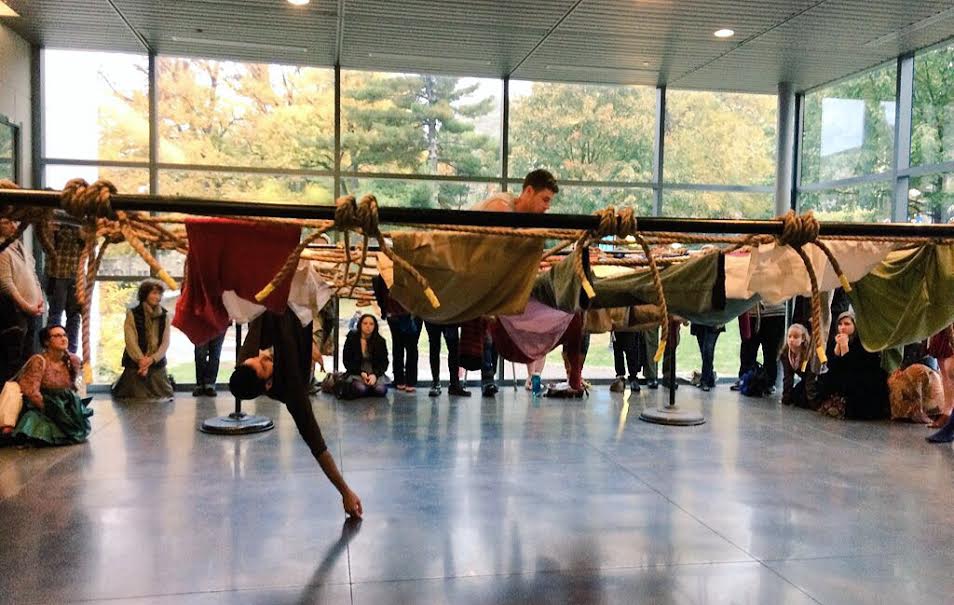The Trisha Brown Dance Company performed Proscenium Works, 1979-2011 in the Bryn Mawr Goodhart Auditorium this past Friday and Saturday nights.
This was a very big deal because the performance is part of the Bryn Mawr College Performing Arts Series Trisha Brown: In the New Body, “a yearlong festival of the innovative choreographer’s artistry” through performances, classes, lectures, and exhibition.
I didn’t know much about Trisha Brown and her artwork before watching the performance. I had visited and enjoyed her art gallery exhibition in Canaday and attended the Thursday masterclass led by some of the company dancers. The masterclass was unlike anything I had danced before. Unlike most dance classes, the entire master class was done without music. The warmup was also unconventional. We were paired up with a partner and took turns “stretching out” our partner by pressing and pulling on certain parts of the body. After warmup, we walked around the studio varying pace and direction and interacting with those around us by circling or looping around each other. We then learned a short segment of choreography from a Trisha Brown piece. Brown’s pieces are strictly modern, but there is a certain fluidity with it that requires you to be in a perfectly relaxed, yet aware, mood to articulate. The masterclass was quite crowded, and there were a lot of dancers there not from Bryn Mawr (the class is free and open to anyone). I had actually preregistered for the class, but was told the class had reached capacity. Thankfully, I was still able to participate, even though I’m not the greatest modern dancer and am not currently enrolled in any curricular dance class. It’s not every day you get to learn and dance Trisha Brown.
I was finally able to make the connection to technique we had learned in the masterclass while watching the dance company performance on Friday night. The dancers’ movements were free and alive, but nothing was random or imprecise. Perhaps my favorite parts of the performance were the contact and lifts between the dancers. Nothing seemed “heavy,” and bodies meshed together as one. The dance company performed 3 pieces: Set and Reset (1983), If you couldn’t see me (1994), and Present Tense (2003). My favorite was Set and Reset, which opened with a lift where a dancer appeared to walk on the wall as if gravity didn’t exist. The music, despite being strictly drum hits and about 8 different synth beats with some random speech, was really catching. I could tell it was straight out of the ’80s. The second piece, If you couldn’t see me (1994), was Trisha Brown’s last solo performance piece. The dancer faces the back the entire time, and the audience watches her dance and the subtle shifts in her back muscles. The final and most recently choreographed piece, Present Tense (2003), featured many lifts and groupings like the first piece as well. Overall, a great performance the full house audience of mostly non-Bryn Mawr people and I enjoyed.
I also attended the Floor of the Forest (1970) performance on Saturday. Who would have thought of creating a performance out of changing/unchanging into and out of clothes strung to ropes suspended above the floor? Trisha Brown. For a silent 30 minutes, we watched two dancers do just this. A couple instances, the clothes ripped and some laughter erupted, but the dancers never fell.
There will be two other free showings of Floor of the Forest (1970) tomorrow Sunday October 25 || 1pm & 2:30pm in the Goodhart Glass Box.


Pingback: Family Weekend | Miranda Canilang's Blog
Pingback: backstage @ trisha brown | Farah Al Yagout Banter Blog
Pingback: Trisha Brown: (Re)framing collaboration | Miranda Canilang's Blog